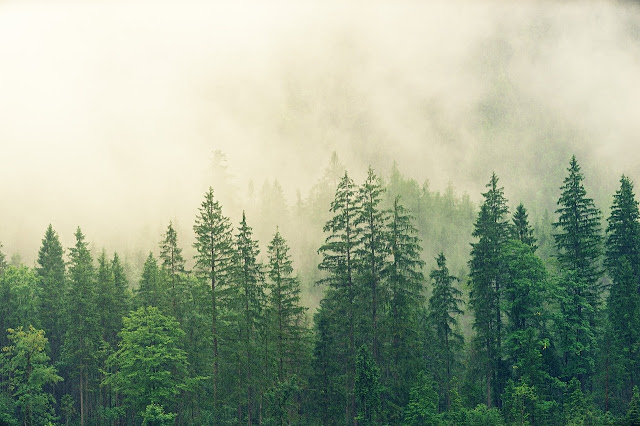As we know, in autumn the leaves of the trees turn red and yellow and later fall off. But do we know why this is happening?
Basically, plants only grow when there is sunlight, which appears as white light, but is made up of rainbow colors. In summer, the leaves of most plants are green due to the high levels of sunlight. They have the dye chlorophyll, which reflects the green part of the sunlight, which is why the leaves appear green. The other parts of the sunlight are absorbed, ie "swallowed" by the plant and used to convert light into starch (photosynthesis). In addition to chlorophyll, there are other color pigments, namely carotenes (orange), anthocyanins (red), or xanthophylls (yellow). In summer, however, these are usually completely covered by the green chlorophyll.
In autumn the solar radiation is weaker, the days become shorter, and the temperatures are lower. As a result, the rate of photosynthesis also reduces. The yellow, red, and orange components of the light are not consumed, and less chlorophyll is needed and thus less is produced. As a result, less green light is reflected, instead, the red, yellow, and orange light components are now also reflected.
Since the plants now carry out less photosynthesis, they pull the nutrients out of the leaves in order to store them in the trunk, branches, and roots as reserve materials. After the leaves have served as places of energy production over the summer and all nutrients have been removed, only some of the yellow-red coloring matter remains.
In this way, the tree prepares itself for winter rest, since the leaves fall off as protection against evaporation.
Why Leaves Fall from Trees in Autumn?
Deciduous plants lose their leaves to protect themselves. There are many factors that make it difficult for plants to retain their foliage and photosynthesize in winter. One reason is the ground frost: Because of it, no water can be absorbed from the earth into the roots. If a tree were to keep its leaves in winter, they would allow a lot of water to evaporate. However, no new water could be absorbed by the plant from the frozen ground.
In addition, pausing life processes in winter is a good way to save energy. The effectiveness of photosynthesis is greatly reduced in the cold - so the tree could hardly gain the energy for all the complex measures for frost protection.
A bare tree also has the advantage that it can withstand a possible snow load better. Hardly any snow remains on the thin branches and twigs, which makes them less likely to break off.
What is the purpose of leaf shedding?
The mechanism behind the leaf shedding is relatively simple and effective at the same time. A thin layer of cork forms at each leaf base. This serves as protection because it closes the ducts. This layer also protects against frost and pathogens. If the layer is completely formed, the leaf loses its connection to the branch and falls down with the slightest gust of wind.
How are evergreen trees able to keep their leaves?
Evergreen plants have leaves that are better protected against frost. Building such a stable foliage is time-consuming, which is why it is not worth shedding. The design of the leaves results in a lower photosynthesis output, but the plant can also use its leaves in winter if the conditions allow it for a short time.












Social Plugin